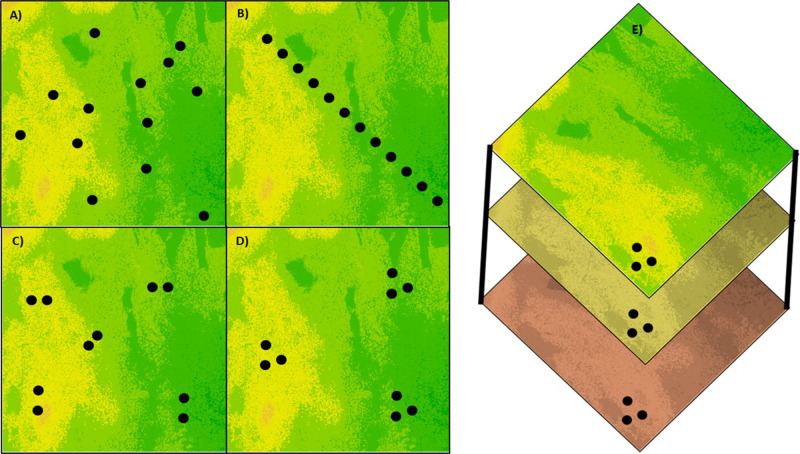FIGURE 1.
Types of sampling designs for creating CWR germplasm collections. (A) Random sampling to obtain an uniform and unbiased representation of a heterogeneous environment, (B) transect sampling to represent the variation along an environmental gradient, (C) paired sampling in a heterogeneous environment to reduce the demographic effect on differentiation between populations, (D) clustered sampling to represent the within-site variation in comparison between sites, and (E) sampling at the same geographic location over different seasons or time points to represent changes in allele frequencies over time.

